Originally published September 27, 2008; updated June 2023
Last weekend I discovered an art jewel: northern New Mexico’s High Road Art Tour, an annual, late-September event. If you enjoy seeing art, meeting artists, and driving through the creativity-inspiring landscape between Taos and Santa Fe, this is a don’t-miss event.
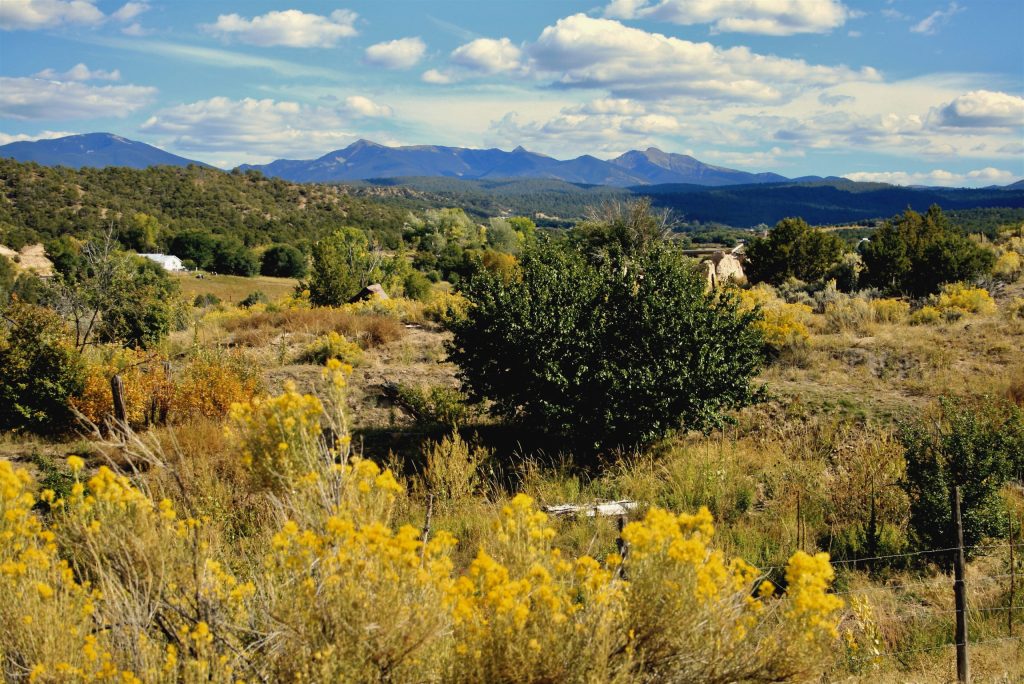
The view of the Sangre de Cristo Mountain Range and golden chamois from Enbi Studio, one of many art galleries on the annual High Road Art Tour between Santa Fe and Taos. ©Laurel Kallenbach
My husband and I and our friends Frank and Monica made our home base at La Posada de Taos—a charming B&B in a hundred-year-old adobe house that’s just two blocks from the Taos Plaza. The new owners, innskeeper Brad Malone and chef Michael Carter have created a lovely ambiance and fantastic gourmet breakfasts. The historic house itself has an arts connection: It was built in 1906 by Burt Phillips, one of the founders of the Taos Society of Artists.
On the Art Road
Feeling like a cross between art pilgrims and treasure hunters, the four of us piled in the car with our High Road Artisans map in hand and drove through the mountain villages of northern New Mexico on the High Road (which links Taos and Santa Fe).
As we wound through picturesque roads lined by golden-blooming rabbitbrush (chamisa) we encountered weavers, photographers, painters, potters, sculptors, jewelry-makers and woodworkers whose studios are located all along the High Road.
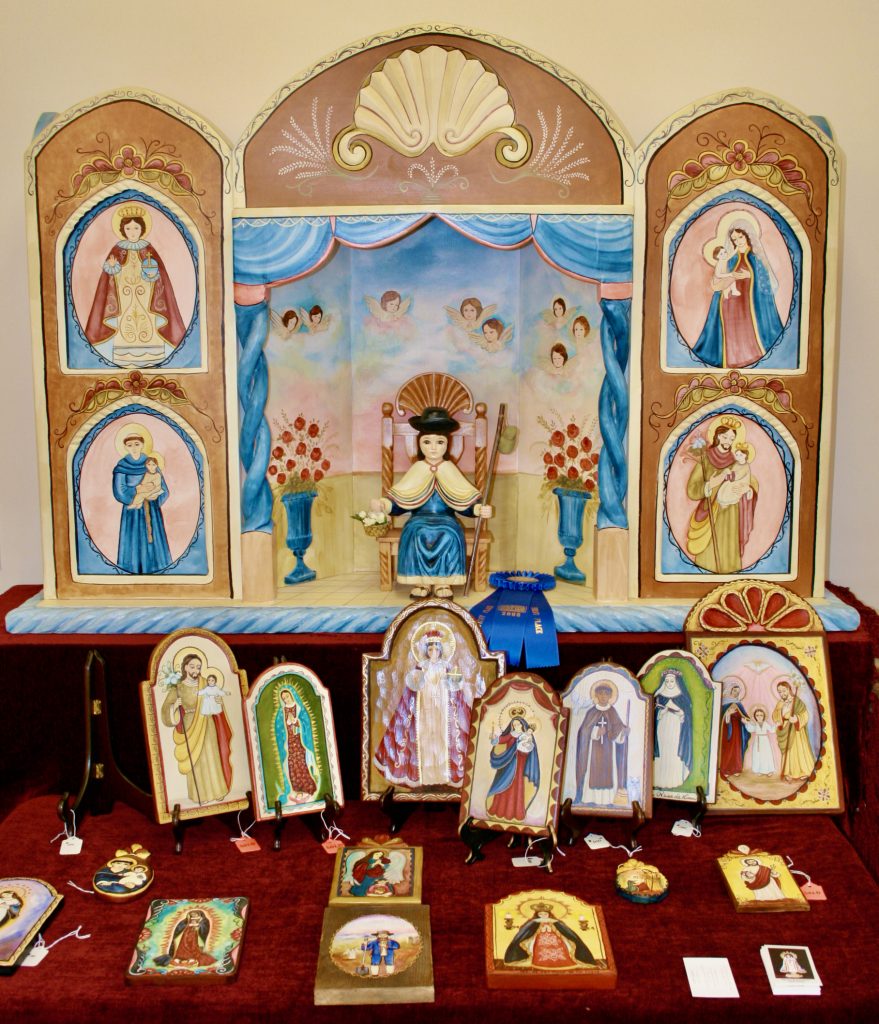
One stop on the High Road Art Tour is Garcia Spanish Colonial Arts Studio. Lorrie Garcia’s retablos and bultos are renouned. ©Laurel Kallenbach
I love glimpsing the studios of world-class artisans, many of whom open their doors to the public only once a year during this art tour. I also love that the High Road Art Tour organizers are dedicated to preserving and developing local talent and traditions in these remote, northern New Mexico villages.
On our journey, we stumbled across an intense mix of interesting artisans and kooky characters—all passionately devoted to making art. Here are just a few of the many we saw:
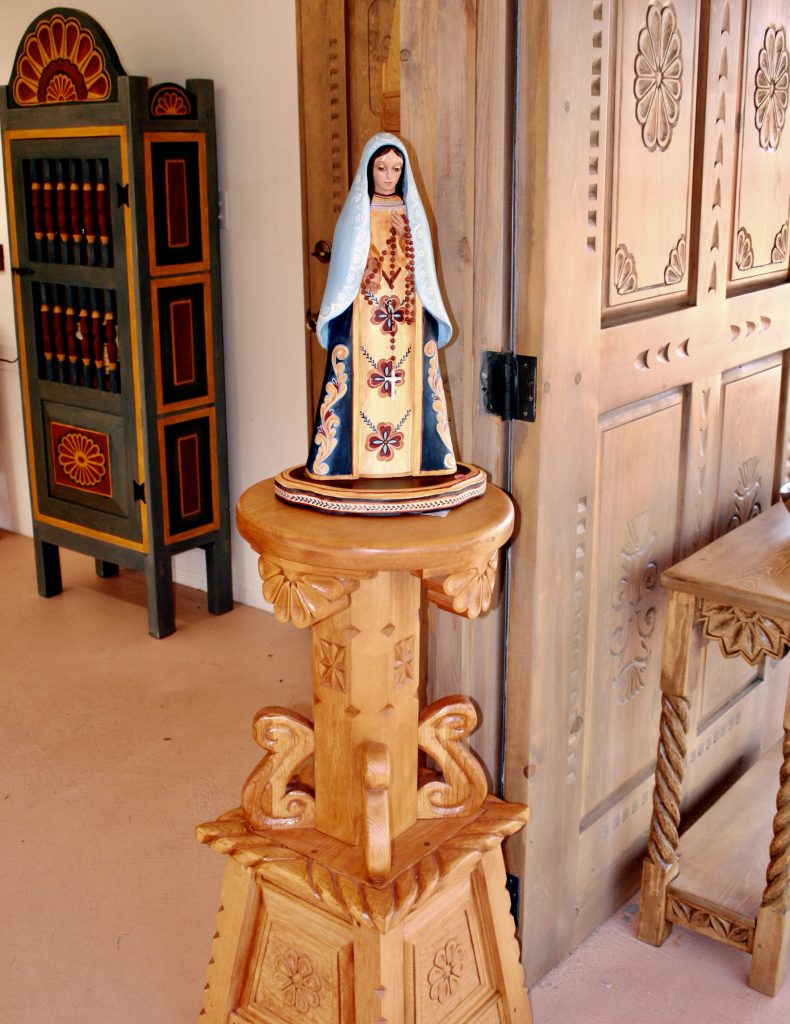
Andrew Garcia carves intricate furniture from local wood. ©Laurel Kallenbach
Andrew and Lorrie Garcia: We expended plenty of oohs and aahs on Andrew’s exquisitely carved Spanish Colonial furniture and Lorrie’s authentic-looking traditional retablos (devotional paintings) and bultos (wooden sculptures of saints and religious figures). Andrew mills wood off the couple’s property. Garcia Colonial Arts studio in Peñasco, New Mexico.
Buffalo Ranch Studio: Located on an actual buffalo ranch near the Picuris Pueblo, Harriette Tsosie works in acrylic and encaustic (pigmented wax). We watched her melt the wax on a new painting using a blow-torch! Who knew making art could be so dramatic!
Enbi Studio: Potter Betsy Williams specializes in wheel-thrown bowls, influenced by her apprenticeship in Japan. Betsy’s Dixon, N.M., studio gets the blue ribbon for gorgeous views. This accomplished ceramicist has a quiet dignity about her, and she draws inspiration from the nature around her studio. In fact, the views from her land are magnificent, especially on the sunny, autumn day when the light reflects off the wildly yellow blooms of the chamisa (rabbitbrush) in contrast with the glorious blues in the endless sky, the white clouds, and the purple hues of the Sangre de Cristo mountains to the west. It’s almost as if the landscape itself plays the muse for Dixon—and for all the other artists in the region—past and present. Georgia O’Keeffe was one of the greats from the past who drank from northern New Mexico’s well of inspiration.
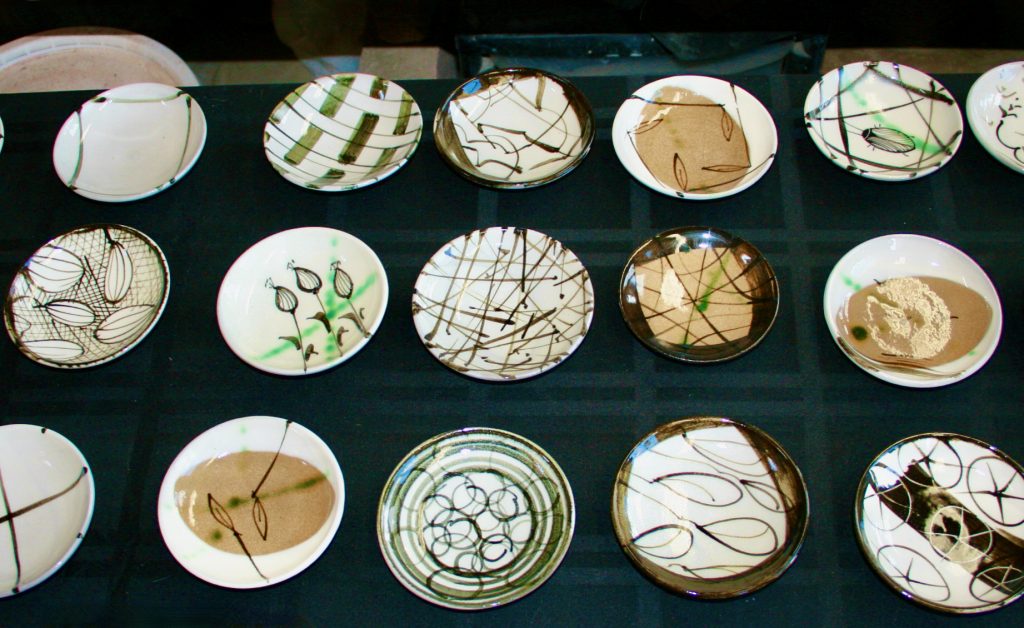
Potter Betsy Williams paints each of her tiny, Japanese-inspired, wood-fired plates in a different and original pattern. ©Laurel Kallenbach
Studio Gallery: We wandered for almost an hour through David Cudney’s sculpture garden and outdoor installation-art display. David has spent six years creating weird, riveting, surreal art from junk, which is spread out over a couple of acres off State Road 76 near Chamisal. A few of the wacky highlights include: a paint-bucket waterfall, steel-girder dinosaurs with cow-skull heads, a totem pole made with rusty chamber pots and enamel basins, Michelangelo’s “David” in an aquarium.
Isabro Ortega: When we visited in 2008, visionary wood artist Isabro Ortega was carving nearly every wooden surface of his work-in-progress home in Truchas into the New Mexican version of the Taj Mahal. He called himself crazy, and no wonder: He had already s spent 24 years carving nooks, window frames, a home chapel, ceilings, and the most ornate pantry (yes, pantry!) I’ve ever seen. (See the photo!) Isabro was a hoot, and he had overcome alcoholism and was pouring his talent into woodworking. My friends and I hoped it won’t take 24 more years to finish his house, which though a bit chaotic, was exquisite. (Postscript: Isabro Ortega passed away in 2018; his Casa was not finished.)
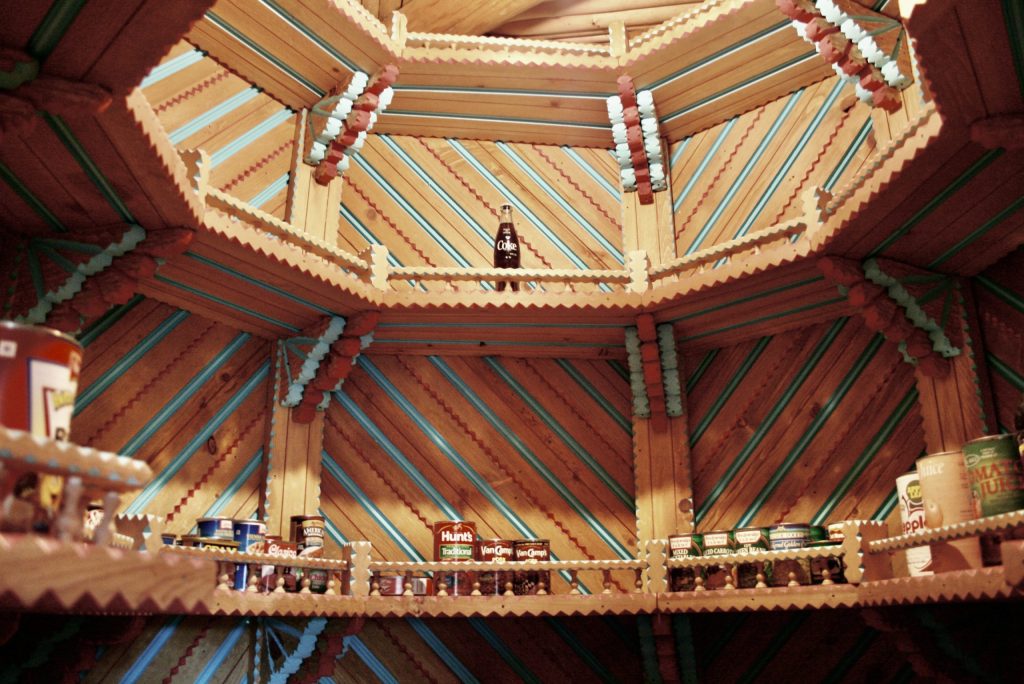
A well-carved pantry: Isabro Ortega lavished years of craftsmanship on in his Truchas home. No one else’s food has ever been stored amid such artistry. ©Laurel Kallenbach
We spent a full day of stopping here and there along the High Road between Taos and Santa Fe, looking at the work of so many different types of artists. Along the way, we also went into the lovely adobe San José de Gracia Church, built in 1760. The church at the time was undergoing some renovation, but it was another form of human-created beauty.
Sadly, the High Road art Tour is over—for this year. I’m marking my calendar for next September.
—Laurel Kallenbach, freelance writer and editor
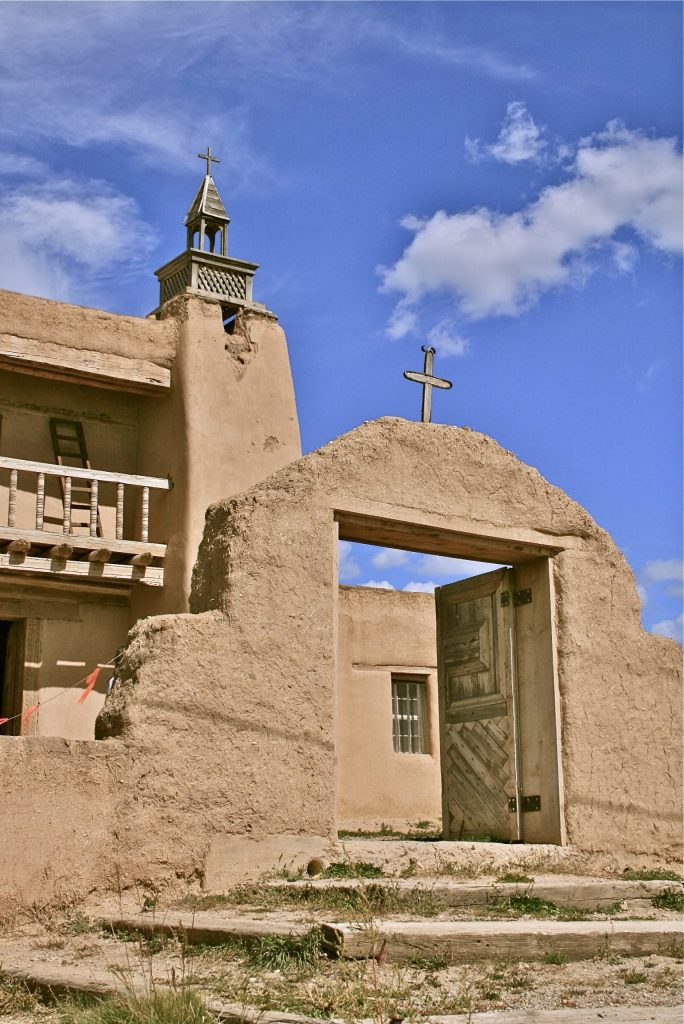
San José de Gracia Church, also known as Church of Santo Tomas Del Rio de Las Trampas. It’s located In Trampas, New Mexico. © Laurel Kallenbach

